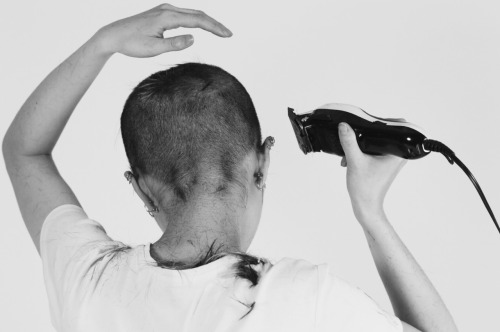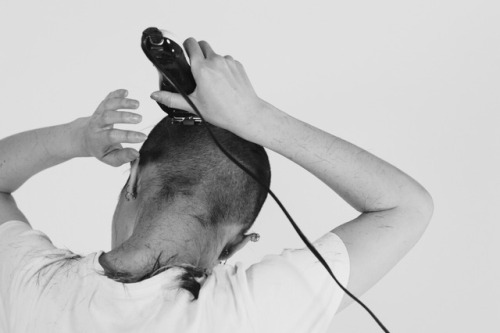Juno Observes Jupiter, Io And Europa

Juno Observes Jupiter, Io and Europa
More Posts from Nyxs-knight and Others









warrior wlw stimboard, for anon
Hope this is what you had in mind! I wanted to include a labrys without using the labrys lesbian flag (which is lesbian only) so I used this art
💜 ⚔️ 💜 - ⚔️ 💜 ⚔️ - 💜 ⚔️ 💜
I love being an unpleasant hairy little woman. I eat some bread and I laugh loudly. I pet my cat. I apologize to no one. Sometimes I make rude noises.
a lot of detrans women seem to very quickly be bombarded with questions about what they're going to do to look more feminine again...seems kinda fucked up.
like a community of women isolated and alienated as a result of gender roles (among other issues but that's the key one here) and we're just gonna chuck a couple more gendered expectations at them?
people asking if detrans women will get reconstructive surgery or laser hair removal, offering them make-up tips or talking about reclaiming femininity...it really seems like the opposite of the unconditional acceptance detrans women need.
(i'm talking about this from the perspective that pushing femininity onto ANY woman is inherently harmful, rather than a detrans position. but another harm caused by this is of course that detrans narratives are being pushed into another box. no two detrans women have the same experiences, positive and/or negative, with transition; or relationships with their bodies. women can absolutely love their post-transition bodies, or have mixed feelings or feelings completely unrelated to transition or just feel completely neutral about their appearance. but whatever the needs and motivations of individual women, femininity is harmful to its core and shouldn't be encouraged as a "counter" to transition in any way.)
bottom line is, (de)trans women don't become more or less female at any step along their (de)transition. they are and were women all along because womanhood is not an identity, it's just female reality.
Celebrating Women’s History Month: Most Recent Female Astronauts
For Women’s History Month, NASA and the International Space Station celebrate the women who conduct science aboard the orbiting lab. As of March 2019, 63 women have flown in space, including cosmonauts, astronauts, payload specialists, and space station participants. The first woman in space was Russian cosmonaut Valentina Tereshkova who flew on Vostok 6 on June 16, 1963. The first American woman in space, Sally Ride, flew aboard the Space Shuttle STS-7 in June of 1983.
If conducted as planned, the upcoming March 29 spacewalk with Anne McClain and Christina Koch would be the first all-female spacewalk. Women have participated in science on the space station since 2001; here are the most recent and some highlights from their scientific work:
Christina Koch, Expedition 59

Christina Koch (pictured on the right) becomes the most recent woman in space, launching to the space station in mid-March to take part in some 250 research investigations and technology demonstrations. Koch served as station chief of the American Samoa Observatory and has contributed to the development of instruments used to study radiation particles for the Juno mission and the Van Allen Probe.
Anne McClain, Expedition 57/58, 59

Flight Engineer Anne McClain collects samples for Marrow, a long-term investigation into the negative effects of microgravity on the bone marrow and blood cells it produces. The investigation may lead to development of strategies to help prevent these effects in future space explorers, as well as people on Earth who experience prolonged bed rest. McClain holds the rank of Lieutenant Colonel as an Army Aviator, with more than 2,000 flight hours in 20 different aircraft.
Serena M. Auñón-Chancellor, Expedition 56/57

Serena Auñón-Chancellor conducts research operations for the AngieX Cancer Therapy inside the Microgravity Science Glovebox (MSG). This research may facilitate a cost-effective drug testing method and help develop safer and more effective vascular-targeted treatments. As a NASA Flight Surgeon, Auñón-Chancellor spent more than nine months in Russia supporting medical operations for International Space Station crew members.
Peggy Whitson, Expeditions 5, 16, 50, 51/52

Astronaut Peggy Whitson holds numerous spaceflight records, including the U.S. record for cumulative time in space – 665 days – and the longest time for a woman in space during a single mission, 289 days. She has tied the record for the most spacewalks for any U.S. astronaut and holds the record for the most spacewalk time for female space travelers. She also served as the first science officer aboard the space station and the first woman to be station commander on two different missions. During her time on Earth, she also is the only woman to serve as chief of the astronaut office. Here she works on the Genes in Space-3 experiment, which completed the first-ever sample-to-sequence process entirely aboard the International Space Station. This innovation makes it possible to identify microbes in real time without having to send samples back to Earth, a revolutionary step for microbiology and space exploration.
Kate Rubins, Expedition 48/49

The Heart Cells investigation studies the human heart, specifically how heart muscle tissue contracts, grows and changes its gene expression in microgravity and how those changes vary between subjects. In this image, NASA astronaut Kate Rubins conducts experiment operations in the U.S. National Laboratory. Rubins also successfully sequenced DNA in microgravity for the first time as part of the Biomolecule Sequencer experiment.
Samantha Cristoforetti, Expedition 42/43

The first Italian woman in space, European Space Agency (ESA) astronaut Samantha Cristoforetti conducts the SPHERES-Vertigo investigation in the Japanese Experiment Module (JEM). The investigation uses free-flying satellites to demonstrate and test technologies for visual inspection and navigation in a complex environment.
Elena Serova, Expedition 41/42

Cosmonaut Elena Serova, the first Russian woman to visit the space station, works with the bioscience experiment ASEPTIC in the Russian Glavboks (Glovebox). The investigation assessed the reliability and efficiency of methods and equipment for assuring aseptic or sterile conditions for biological investigations performed on the space station.
Karen Nyberg, Expedition 36/37

NASA astronaut Karen Nyberg sets up the Multi-Purpose Small Payload Rack (MSPR) fluorescence microscope in the space station’s Kibo laboratory. The MSPR has two workspaces and a table used for a wide variety of microgravity science investigations and educational activities.
Sunita Williams, Expeditions 32/33, 14/15

This spacewalk by NASA astronaut Sunita Williams and Japan Aerospace Exploration Agency (JAXA) astronaut Aki Hoshide, reflected in Williams’ helmet visor, lasted six hours and 28 minutes. They completed installation of a main bus switching unit (MBSU) and installed a camera on the International Space Station’s robotic Canadarm2. Williams participated in seven spacewalks and was the second woman ever to be commander of the space station. She also is the only person ever to have run a marathon while in space. She flew in both the space shuttle and Soyuz, and her next assignment is to fly a new spacecraft: the Boeing CST-100 Starliner during its first operational mission for NASA’s Commercial Crew Program.
Cady Coleman, Expeditions 26/27

Working on the Capillary Flow Experiment (CFE), NASA astronaut Catherine (Cady) Coleman performs a Corner Flow 2 (ICF-2) test. CFE observes the flow of fluid in microgravity, in particular capillary or wicking behavior. As a participant in physiological and equipment studies for the Armstrong Aeromedical Laboratory, she set several endurance and tolerance records. Coleman logged more than 4,330 total hours in space aboard the Space Shuttle Columbia and the space station.
Tracy Caldwell Dyson, Expedition 24

A system to purify water for use in intravenous administration of saline would make it possible to better treat ill or injured crew members on future long-duration space missions. The IVGEN investigation demonstrates hardware to provide that capability. Tracy Caldwell Dyson sets up the experiment hardware in the station’s Microgravity Science Glovebox (MSG). As noted above, she and Shannon Walker were part of the first space station crew with more than one woman.
Shannon Walker, Expedition 24/25

Astronaut Shannon Walker flew on Expedition 24/25, a long-duration mission that lasted 163 days. Here she works at the Cell Biology Experiment Facility (CBEF), an incubator with an artificial gravity generator used in various life science experiments, such as cultivating cells and plants on the space station. She began working in the space station program in the area of robotics integration, worked on avionics integration and on-orbit integrated problem-solving for the space station in Russia, and served as deputy and then acting manager of the On-Orbit Engineering Office at NASA prior to selection as an astronaut candidate.
Stephanie Wilson, STS-120, STS-121, STS-131

Astronaut Stephanie Wilson unpacks a Microgravity Experiment Research Locker Incubator II (MERLIN) in the Japanese Experiment Module (JEM). Part of the Cold Stowage Fleet of hardware, MERLIN provides a thermally controlled environment for scientific experiments and cold stowage for transporting samples to and from the space station. Currently serving as branch chief for crew mission support in the Astronaut Office, Wilson logged more than 42 days in space on three missions on the space shuttle, part of the Space Transportation System (STS).
Other notable firsts:
• Roscosmos cosmonaut Svetlana Savitskaya, the first woman to participate in an extra-vehicular activity (EVA), or spacewalk, on July 25, 1984
• NASA astronaut Susan Helms, the first female crew member aboard the space station, a member of Expedition 2 from March to August 2001
• NASA astronaut Peggy Whitson, the first female ISS Commander, April 2008, during a six-month tour of duty on Expedition 16
• The most women in space at one time (four) happened in 2010, when space shuttle Discovery visited the space station for the STS-131 mission. Discovery’s crew of seven included NASA astronauts Dorothy Metcalf-Lindenburger and Stephanie Wilson and Japan Aerospace Exploration Agency (JAXA) astronaut Naoko Yamazaki. The space station crew of six included NASA astronaut Tracy Caldwell Dyson.
• Susan Helms shares the record for longest single spacewalk, totaling 8 hours 56 minutes with fellow NASA astronaut Jim Voss.
• Expedition 24 marked the first with two women, NASA astronauts Shannon Walker and Tracy Caldwell Dyson, assigned to a space station mission from April to September, 2010
• The 2013 astronaut class is the first with equal numbers of women and men.
• NASA astronaut Anne McClain became the first woman to live aboard the space station as part of two different crews with other women: Serena Auñón-Chancellor in December 2018 and currently in orbit with Christina Koch.
Make sure to follow us on Tumblr for your regular dose of space: http://nasa.tumblr.com
wow that post saying the body isn't a temple but a garden cuz temples can be desecrated but gardens can grow again if you tend to them even if they were destroyed....iconic. truly iconic. the body wants care, not worship

Mayall’s Object (ARP 174)
While Galaxies can come in all shapes and sizes, with a preference to Spiral and Elliptical, few come as interesting as ARP 174.
The designation ARP is the surname of Halton Arp, an American astronomer who in 1966 published The Atlas of Peculiar Galaxies, of which Mayall’s Object was the 174th in his catalogue.
Originally thought to be a galaxy reacting with a normally visible line of Hydrogen in Intergalactic space, it’s now considered to be two distinct galaxies in the throws of merger. As the elongated object made contact, the ring like structure of the other was formed by a shockwave of the event.
At 450 Million light years from Earth, we are seeing what happened almost half a billion years ago, and not what is there right now.

Alpha Scuti
The brightest star in the small southern constellation of Scutum, and just under 200 light years from Earth.

The star sits in front of the main body of the Milky Way’s central region, giving it a spectacular star field behind. Many of the background stars lie between 2-10,000 light years behind it, with a few over 17,000 light years. It’s important to remember, we can only see the very brightest of the stars in the milky way, a star like our Sun is only visible by the naked eye not far beyond 32 light years, so stars 1000′s of light years away are incredibly luminous, but also maybe only a tiny % of the actual stars that lie there.
Alpha Scuti was once a star not too dissimilar to our own sun, but has since began the process of falling out of the main sequence and becoming a red giant. Although only 1.3 times the mass of our sun, it has now bloated to 20 times our sun’s radius and 186 times brighter than the sun.
-
 motorball reblogged this · 3 years ago
motorball reblogged this · 3 years ago -
 kylorensgayass reblogged this · 3 years ago
kylorensgayass reblogged this · 3 years ago -
 generatedhandle reblogged this · 3 years ago
generatedhandle reblogged this · 3 years ago -
 generatedhandle liked this · 3 years ago
generatedhandle liked this · 3 years ago -
 betaoctillery reblogged this · 3 years ago
betaoctillery reblogged this · 3 years ago -
 betaoctillery liked this · 3 years ago
betaoctillery liked this · 3 years ago -
 akuauli liked this · 4 years ago
akuauli liked this · 4 years ago -
 wis-doom-witch reblogged this · 4 years ago
wis-doom-witch reblogged this · 4 years ago -
 wis-doom-witch liked this · 4 years ago
wis-doom-witch liked this · 4 years ago -
 lunecrypt liked this · 4 years ago
lunecrypt liked this · 4 years ago -
 uboatan reblogged this · 4 years ago
uboatan reblogged this · 4 years ago -
 jlepape liked this · 4 years ago
jlepape liked this · 4 years ago -
 inaktivinaktiv liked this · 4 years ago
inaktivinaktiv liked this · 4 years ago -
 less-jon-mess reblogged this · 4 years ago
less-jon-mess reblogged this · 4 years ago -
 borken-and-forgorgken reblogged this · 4 years ago
borken-and-forgorgken reblogged this · 4 years ago -
 gothcoquetteprincess liked this · 4 years ago
gothcoquetteprincess liked this · 4 years ago -
 daydreamission reblogged this · 4 years ago
daydreamission reblogged this · 4 years ago -
 nearina liked this · 4 years ago
nearina liked this · 4 years ago -
 peacephotography liked this · 4 years ago
peacephotography liked this · 4 years ago -
 shikiswife liked this · 4 years ago
shikiswife liked this · 4 years ago -
 gyagu reblogged this · 4 years ago
gyagu reblogged this · 4 years ago -
 naturalblue22 liked this · 4 years ago
naturalblue22 liked this · 4 years ago -
 potato-chip liked this · 4 years ago
potato-chip liked this · 4 years ago -
 none-gender-left-man reblogged this · 4 years ago
none-gender-left-man reblogged this · 4 years ago -
 none-gender-left-man liked this · 4 years ago
none-gender-left-man liked this · 4 years ago -
 smokinlikemarley reblogged this · 4 years ago
smokinlikemarley reblogged this · 4 years ago -
 smokinlikemarley liked this · 4 years ago
smokinlikemarley liked this · 4 years ago -
 inthecalm reblogged this · 4 years ago
inthecalm reblogged this · 4 years ago -
 dumnhpy liked this · 4 years ago
dumnhpy liked this · 4 years ago -
 healingtype liked this · 4 years ago
healingtype liked this · 4 years ago -
 more-jon-mess liked this · 4 years ago
more-jon-mess liked this · 4 years ago -
 entryplug reblogged this · 4 years ago
entryplug reblogged this · 4 years ago -
 spaceconveyor reblogged this · 4 years ago
spaceconveyor reblogged this · 4 years ago -
 honeybittz liked this · 4 years ago
honeybittz liked this · 4 years ago -
 hvshaa reblogged this · 4 years ago
hvshaa reblogged this · 4 years ago -
 xchelone reblogged this · 4 years ago
xchelone reblogged this · 4 years ago -
 lfarfallal reblogged this · 4 years ago
lfarfallal reblogged this · 4 years ago -
 openwonden reblogged this · 4 years ago
openwonden reblogged this · 4 years ago -
 foxhotbox reblogged this · 4 years ago
foxhotbox reblogged this · 4 years ago -
 foxhotbox liked this · 4 years ago
foxhotbox liked this · 4 years ago -
 sp0tlessmxnd reblogged this · 4 years ago
sp0tlessmxnd reblogged this · 4 years ago -
 professor41 reblogged this · 4 years ago
professor41 reblogged this · 4 years ago




